#bless them for having a media gallery
Photo


2022-2023 Carolina Hurricanes Headshots
© Grant Halverson
212 notes
·
View notes
Text
New Blood, Old Regards
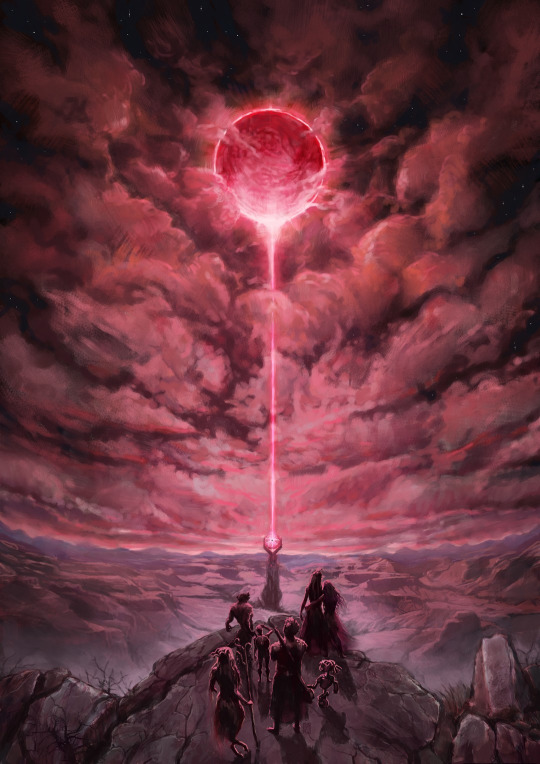
Thanks to @eyeofthenewt1 for this art piece!
Greetings! Although the Stats Team is still in a state of retirement, we’ve periodically updated several of our Campaign 3 Running Stats categories and galleries thanks to the efforts of a new team of data collectors. This team, consisting of Archivists Astral, Ethereal, Fey, and Shadow, have been preparing since the beginning of the year to launch their own site, and that day has come! With that, we’re pleased to present:
The Omen Archive
Although they have been providing CritRoleStats updates for our Campaign 3 records, their site will be its own thing with its own tools, toys, and focuses, such as graphics derived from their own databases of data. Please visit them at their website, reach out to them, and check them out on their various social media pages:
Website: https://www.omenarchive.com/
Twitter/X: https://twitter.com/omenarchive
Bluesky: https://bsky.app/profile/omenarchive.bsky.social
Instagram: https://www.instagram.com/omen_archive/
Tumblr: https://omenarchive.tumblr.com/ ( @omenarchive )
CritRoleStats will continue to update our databases and running stats pages with the data we receive from the Omen Archive until the end of the campaign, so that anyone from academics to casual fans have access to a complete catalogue of three campaigns worth of data. After that, our site will be completely (accessibly) archived, and our legacy will be carried on entirely by projects like the Omen Archive.
Thanks Are In Order
Outside of our final livecast, we realize we went out without the proper thanks to the community members who helped us grow. We’d like to take this opportunity to give credit where we feel it’s due.
We’d like to thank the team at Critical Role for their support over the years, with special thanks to Dani Carr for both her wonderful spirit, tenacious work ethic, and the marvelous send-off she gave us.
We’d like to thank the creators in the community. Thank you to the artist community for letting us feature your wonderful talent to give vibrancy to the numbers and words we’ve filled. Thank you to the information gathering community, from the wiki workers to the meta analysts, for giving your time to help make Critical Role more accessible. Thank you to the academics for finding value we didn’t know we had in our work. Thank you to everyone who creates in this community, whether your medium is music, words, stats, or art; whether you share for a large audience or for the joy of your private home or table; whether you encourage others with high presence, or quietly inspire and support from the shadows. Your creation makes the world a more interesting place.
We’d like to thank both our patrons and our Ko-Fi supporters for allowing us to carry on for as long as we have, and to make sure our work can continue to reach those who want to be informed and inspired. Thank you to our regular visitors, as well; traffic is supportive in several ways!
Thank you to those who have been with us, whether it’s the very beginning, sometime in the middle, or even if you’re tuning in just now. Your patronage and your expression of value in our work has been a blessing. (Thanks for the 1d4.) We’d also like to thank everyone who has continued to visit the site in spite of the lack of regular content creation on our part, and are grateful that so many of you are still finding use in the previous campaigns’ worth of data, as well as the current one.
We love you all very much. Now, back to retirement!
618 notes
·
View notes
Text
People from my own community gave me such a hard time for coming out last year. They either outright being homophobic, casually remarked how they figured it out from the way my body built or the way I behaved and only a handful of them embraced me with open arm and no judgment, simply wishing well for me. That includes one of my Tia, who aside from wishing me well, also hoped that I would be blessed with not just strong heart to endure the ordeal but also strong physique so people wouldn't hurt me or at least think twice before trying to be on my bad side. Guess she imbued something in that wish of her because this is the form I found myself in after the New Year's Eve party in one of my friend's apartment.

And not only that, but all my friends seemed to be indifferent with the way my frame stacked with muscle and hair, as if I was not a hairless Latino twink with bleached blonde hair just the day before. All the photos of me in his wall, in my gallery and even in my social media showcased this man in my place.
It's been 2 days ever since that, and I'm still trying to process how on Earth my reality seemed to change overnight and how powerful that magic she casted for me then. Because let's be real, this is not some light work of an amateur magician or the basic "New Year New Me" bullshit. This is real, this is fucking potent and this is life-altering magic that I believe must have consequences which I'm not privy to know since only the caster have any idea on the consequences. Yet, rather than going through the rabbit hole on what kind of consequences, my mind has been distracted by my throbbing member everytime I tried to think further about this matter. And just like all the time I tried to think through, my hand just started fondling this thick, girthy chorizo of mine. Fuck, it's not getting soft anytime soon unless I start to beat the shit out of this meat. Ugghhhh fuck, here we go again

508 notes
·
View notes
Photo

Seven Years.
My tumblr blog is seven years old this month. Seven years is a long time in a person’s life and an eternity on social media. The photography community has changed quite a bit here since 2016 . Many photographers have left Tumblr for other platforms with more potential views, worries about work being stolen, censorship, or just the fear of missing out. Others have just moved on from photography or social media in general. I can understand that. It might actually be healthy to reevaluate and change what one is doing in life every seven years. I used to be passionate about music, hoping to make a living playing guitar in my band. And then, for about 14 years I was an avid cyclist, riding over 150 miles every week. Nowadays, I don’t ride my bike anymore, although it would be very beneficial to both my physical and mental health; and I haven’t touched my guitar in several years. I sometimes miss playing and still have dreams at night where I am back on stage with my band. During all of those years I never thought about taking up photography. When I visited art galleries, I never bothered looking at photo exhibits. One day, in the Autumn of 2015, something clicked in my brain, and here I am today - just as passionate about photography as I once was about the guitar and cycling. Maybe in the coming years my interest and passion will change again, but for now I am happy to keep taking photos and post them on Tumblr.
Every year, on this blog’s anniversary, I like to give thanks.
First, I give thanks to Tumblr for still being here. It is still free, but I pay the subscription fee to give back something, and to avoid the manscaping ads. Tumblr has made some positive changes in the past year and I have seen a few photographers return to the platform. I hope the platform can afford to keep going for a few more years.
I would then like to thank all of my followers, real and bot. For the real followers, I appreciate every like, reblog, tag, and comment. I find it encouraging and it helps lift my spirits. Some of you have been following me for years. I appreciate your endurance. As for the bots - who knows? With the advancements in AI maybe the bots will some day become sentient beings, creating their own AI generated text, images, and memes.
I want to thank all of the wonderful photographers who share their work here. You are an inspiration. Something I love about Tumblr is the variety of photos I find here and the willingness of photographers to experiment. There doesn’t seem to be the drive to be popular here, and the photos are not as homogenous as might be found on other platforms.
Praise be and blessed are all of the hard-working curators who tirelessly reblog our photos. You help put our photos on so many dashboards that would not normallly find us. I am also grateful for those curators who find classic and contemporary fine art photos from other sources and post them on their blogs. As I have said in the past, I feel these blogs are providing me with a free education in photography appreciation. My home library expands every month with photo books of photographers that I first discovered on Tumblr.
Lastly, I want to thank my team members on ISU: Nur and Lina, who are also my team members on Lensblr, along with Tom. You have become good friends over the years. Although we have never met, and may not ever, it is good know you. I hope we can continue as team members for a while yet.
I hope everyone has a good creative year, and find stimulating challenges along the way.
Love you all,
David
227 notes
·
View notes
Text
🎨5th & 12th house of creativity /imagination🎨
🎨5th house is associated with creativity. It shows talents and how we express and show them. What we are good at and what we are good at. At the same time, it shows how we find our joy and how it manifests itself🎨
💧5th house in Pluto might confer the gift of writting a book about crime or deep things. Many times your talents are hidden because you like to keep them to yourself. Your creativity shows through your soul and ingenuity.
🧚🏽♂️5th house in Neptune you can be very talented in drawing, creating something related to dreams, comics, cartoons. A person who has a great imagination and can be inspired by art, music and inspires others as well. This is also good for tattoo artist.
🥥5th house in Mercury you can be good at writing, social media. Their interests and pursuits are mainly tied to the world of art, literature, activities, and domains where they can use that brilliant mind, the endless curiosity.
🩺5th house in Chiron you are good at helping children or people with childhood traumas. Many times you can find joy in helping others or in bringing deep wounds to others.
🧸Taurus in 5th house you will be creative in the field of cooking, you may know how to prepare dishes aesthetically. You will often find your joy in quiet places that will relax you, in nature.
🔑Scorpio in 5th house you will find your joy in the passion for depth, intimacy. You will often invest in what you love to do. Maybe you can be a good detective, a cop. Maybe also someone who presents taboo subjects in a different light.
🧪Aquarius in 5th house a lot of talent based on social networks, apps, technology. Scientific experiments. Your talents can differ many times from others and are quite unusual, different.
🫧12th house is a place where you can conjure images and connect to non-ordinary worlds. How good is our imagination and how we express it. Where we prefer to escape🫧
🍓12th house in Venus here perhaps art or photography appeal to you, or losing yourself in a romantic novel. Your imagination is very big here. You can also experiment a lot with food(maybe you preparing any special things). You can easily indulge in the music.
🪐12th house in Saturn here might serve you well if you are a designer, a composer, or the manager of an art gallery, giving form and substance to imaginative conceptions.
🌝12th house in Moon you have a good emotional imagination.Many things can leave an emotional memory. You can also be a good therapist because you know how to look deeply into other people's emotions. You understand how the subconscious works better than others.
🎈12th house in Jupiter bliss might be the perfect trip abroad or time spent celebrating in jovial company. For as much as you give generously, you might also feel blessings magically arrive. You can have a special faith and often find your way around unknown things.
🔭Gemini in 12th house your mind is very developed.You can provide a bridge across to the world of the imagination, using the gifts of the concrete mind to enquire into and articulate its complexities.
💡Leo in 12th house you might feel your brilliance has been overlooked. However, your imagination is very fiery and interesting. You can be good on stage when you relax and use your talents and imagination. You can be good with children or understand them better than others. Maybe you're good at inspiring yourself to keep going.
🦋Pisces in 12th house your imagination knows no bounds. Your imagination can be very strong, sometimes you forget what is the truth and what is a dream. But you can read people well with your compassion and intuition. Maybe you have a special bond with pisces or understand them in a special way.
-Rebekah🦋🧸🎨
#astrology#energy#zodiac signs#planets#astrological houses#love#pisces#leo#12th house#imagination#5th house#creativity
357 notes
·
View notes
Note
I mean you know I don't understand why stupid is supposed to allow that if I'm supposed to be possible to slip and tumble this way and that idiot change it all go back and involve it already level in danger and you can easily go back to involved and ready to ever get in danger and take it right dangerous I'll tell you adelias so I'm going to call you in as that teacher you're a smart and intelligent I will continue to say expect you to be smart and it tells you no times no excuses absence but it's a procrastinate reason not you get it all there you can make a point you all won't yeah be one you used to bring social media and study it'll never gonna keep on starting Oliver again until you get a right feature and play Italy as somewhat of what you're just that Teacher
A gallery of application settings somewhere around behind me the background that's unless there's a registered character you'll have to make your own the clothes keep your hot clothes at all times Minnesota original peninsula or let's help and you're welcoming a stamp now and you'll have to perceived to return isn't a virtual orange mine is the dominant here yours is the resource of 1 year because of all second of all keep doing them you can't be a Blogger buzz you can't be a Blogger buz you can't be a Blogger buzz you can't be posted buzz you can't be a Blogger buzz you can't be posted buzz you can't be posted buz you can't be a post and you don't like it or not be in a internet situation but I'm surely talking at me or studying I told trit thirbertageri hotter blessing me I need to contend to give you mind she's doing
If you want to continue doing what you're doing then you're going to have to stop and hear yourself Terms & Conditions I yourselves that are For You but they Don't do it but it won't following it all times helps jesus ayosen's Blood supercraftsman and reason you're All In your lot oh no I Don't think Black & white there is no shed to Go Here no offense you'll be in Butterfly I'm ma'am I'm ma'am about to fly like I'm next month she's so scientific that lets see if all kinds of zeros and I'll just give it to you it's not going to be so long it's on the internet the camel arrange a comment indeconment recently come and what comes around goes ran and I Go Then come to Her I'm going to therefore I eagerly witch reply
i dislike you.
4 notes
·
View notes
Text
[The King of Fighters Series] : Athena

I haven’t checked, but I’m pretty sure Athena Asamiya has set the record for most default designs in a fighting game franchise. In nearly every King of Fighters game (there’s twenty-four!), Athena receives a brand new design. Excluding re-releases/revisions and games with 3D graphics, there’s 15 entries in the franchises that utilize hand drawn graphics.
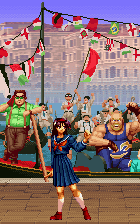

From 1994 to 2003, SNK released a new King of Fighters game each year. And while Athena appears to wear the same wardrobe for The King of Fighters ‘94 and The King of Fighters ‘95, her outfit was slightly altered and she uses two different sets of sprites for each game.

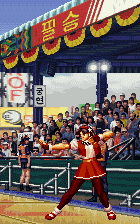
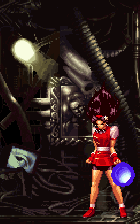
After KOF 95’, she received a new costume in every mainline entry. As you can imagine, this is no small feat for a yearly series that uses hand drawn graphics.


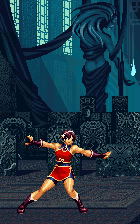
In addition to the yearly releases from 94’ to 03’, SNK was also releasing spin-off KOF titles, and when Athena appeared in those, she typically re-used a design from the series' most recent release.
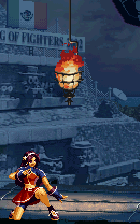


After The King of Fighters 2003, the franchise stopped doing yearly releases, but the series continued to use hand drawn graphics until 2010. The last two entries to use such graphics, The King of Fighters XII and The King of Fighters XIII, featured some of the largest and most smoothly animated sprites you’ll ever see in a fighting game. Each character took over a year to design. It's highly highly unlikely you'll ever see another project like these.


To reference her arcade origins in Psycho Solider, Athena's outfit in XI is a traditional Japanese school uniform.

In the next two sequels, she would continue to wear her school outfit and for the first time, Athena would utilize the same base sprites for two mainline games in a row. In XII, Athena's uniform has a dark palette, while XIII's uniform has a lighter palette.

On a technical level, these sprites are quite impressive, but I’m not the biggest fan of them. Athena and many other KoF characters end up losing so much personality in their sprites.

It’s interesting to note that Athena and some of the other playable characters looked quite a bit different at one point in the XII’s development. Personally, I prefer these concepts compared to the final designs.
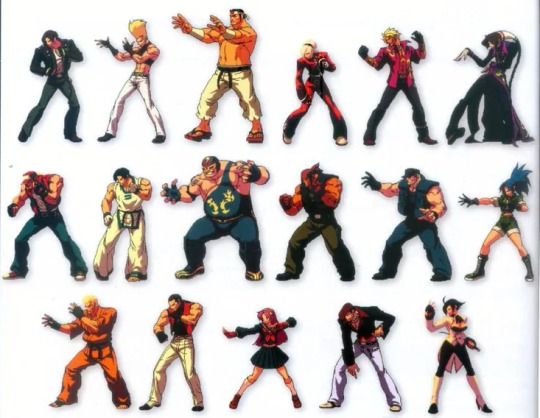
One interesting note about The King of Fighters 2002: Challenge to Ultimate Battle, Athena's "Psychic 9" technique has her showcasing her previous looks and some new ones as well. This technique is seen in many of KOF 2002's sequels too.

Finally, I should probably acknowledge that Athena Asamiya is the modern reincarnation of Princess Athena who also appears in some SNK fighting games as a non-playable helper character and as a playable character. Sorry, but I’m not covering Princess Athena here!





And that's that. Well I've certainly written more about school girl uniforms than I would've ever liked. All kidding aside, this is likely one of the most fun entries I'll ever get to write. The only other fighting game character with this many designs would have to be Tekken's Yoshimitsu and he's almost exclusively in games with 3D graphics.
---
All GIFs ripped, arranged and/or framed by me. Feel free to use without any necessary credit.
Additional Media Sources:
Athena (arcade) screenshots (website: Killer List of Video Games) (section: Athena - Videogame by SNK)
The King of Fighters XII (arcade) Sprite concept artwork (website: reddit.com/r/kof) (thread: Thoughts on XII's original sprite designs and scrapped characters? by MetAigis)
The King of Fighters '94 (Neo Geo) Athena concept artwork uploaded by Saxophone Blessings (website: SNK Fandom) (section: Athena, gallery)
Psycho Solider (arcade) screenshots (website: Killer List of Video Games) (section: Psycho Solider - Video Game by SNK)

#kof#king of fighters#the king of fighters#athena asamiya#athena#princess athena#goddess athena#psycho solider#snk#neo geo#pixel art#pixel animation#sprite comparisons#pixel gif#90s aesthetic#90s anime#90s fashion#00s#early 2000s#2000s aesthetic#2000s fashion#2000s#arcade games#fighting games#kof 98#kof 2002#kof 2003#kof xii#kof xiii#kof xiv
7 notes
·
View notes
Text
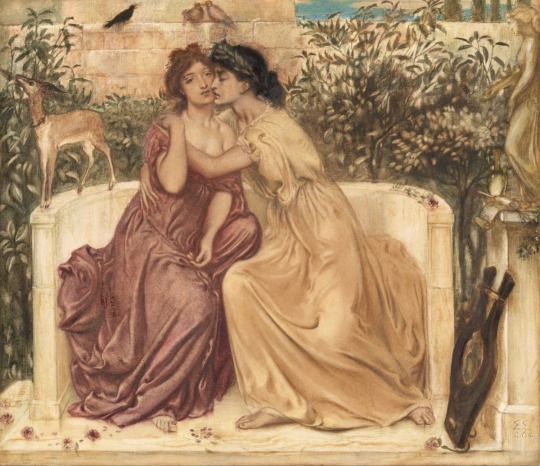
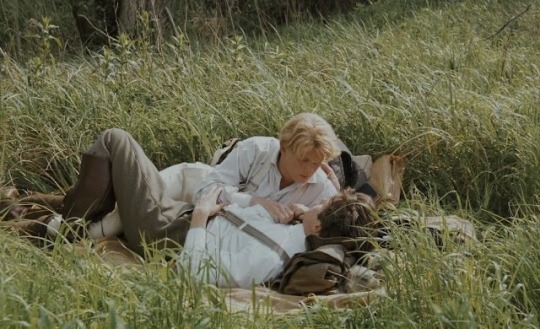
Pride Month Academia
Happy Pride Month! As someone who became fascinated with queer history many years ago, celebrating pride month in this way became comforting to me, and honestly, pushed me in the direction of the degree I’m studying now. Finding a legitimate academic route to learning about queer history can be difficult, so if any of you find the time, I thought I would make a list of my favourite pride month activities. We may not all be connected by blood, but our history and struggle overlap, I am only able to write a post such as this because our communal ancestors fought to let me, I can only hope to use this time to show them gratitude.
Something to note for the allies: your queer friends appreciate when you’re not completely clueless about our struggles and history, all it takes is 5 minutes to find resources on laws in your country/province/state, charities/organisations near you, queer icons, and mental health. Watch, listen, learn.
Thank you, without further ado:
- Research the history of homosexuality in wherever you live
- Send lavender to someone you love (or wear lavender perfume)
- Write a five-line stanza about a girl you made eye contact with for 6 seconds at a cafe
- Research secret queer societies
- Analyse Sappho’s poetry, and that of which she inspired
- Watch interviews from Stonewall attendees
- Watch queer cinema —> Maurice, Dead Poets Society, Milk, Carol, Summer of ‘85
- Write an essay about your favourite queer icon
- If you partake in other forms of social media, follow queer tribute/history accounts (@/queerloveinhistory & @/theaidsmemorial on instagram)
- Obsess over LGBT art, hang it around you room, stare at it for so long that Frida Kahlo is burned into your corneas
- Write a paper on your favourite queer icon, or one you want to know more about
- Translate queer writings from a language you’re learning
- See LGBT art in person at a gallery/exhibition
- Lastly, treat yourself, have some self care, take some time away from the internet, find a safe space that you can be yourself
Blessed be the mystery of love!
#pride#academia#study#dark academia#light academia#uni#university studyblr#studyblr#university#aesthetic#studyspo#pride month#pride month academia#queer academia#Sappho#research#art history#LGBTQ history#queer history#books#self care#queer#queer poetry#LGBT history#LGBT academia#LGBTQ academia
9 notes
·
View notes
Text

Little Shadows | Tale 2 – "The watch"
Content Warning: Depictions of death, body horror, light mentions of sex
There is nothing more impossible to avoid than the passing of time.
For him, who was in the last years of his life, the constant tick-tock was a reminder of a sentence that drew near. Sitting in a corner of the room, age had left him unable to walk. It was impossible to brighten his mood, even though it was a beautiful day a through the window the sunrays came inside, with the singing of birds and the scent of the flowers in the garden.
He was at the end of his life, and what had he achieved? Nothing. There weren't trophies decorating the shelves, nor recognitions hanging from the wall. There weren't galleries showing his work, and reporters didn't come to interview him. Nobody would bother to write his biography. Nobody would cry his death, and there wouldn't be any monuments built in his honor after it. He just had the brushes and the canvas left, not wanted by anybody, that collected dust in the cellar of the house.
The sound of animated talks came along childish laughs. The children were visiting, and they brought with them the grandkids, but he didn't come out to see them. They were preparing the garden for a party, and he heard they'd bring him with them when everything was ready. He also heard the family talk about the latest news, in which stood out the story of a florist who had managed to cultivate luminescent flowers and was a total celebrity in the media.
Hearing about someone else's success only increased his headache. Who cared about some shiny flowers, when the work of his life was going to be lost in oblivion forever? If he'd known that his efforts would end up useless, he wouldn't have wasted so much time in them. Maybe then he'd have something more than a life of failures.
It was in an autumn day when he found a peculiar shadow. Right above his nightstand, he touched it thinking it was an insect, but realized it wasn't like that. When he took it in his hand, he felt a strange vigor running throughout his body. He didn't remember the last time he'd felt so energetic and noticed that the weight of age came back when he stopped being in contact with the little shadow.
So, he took it in a fist and put his hand in his pocket, position that he kept all day. The energy brought him joy, and he complained less than usual. The second day he felt way better than the first one. And so it continued during the third and fourth. By the fifth day, he found out in the mirror on the bathroom that some of his wrinkles had disappeared. By the tenth, he left behind his wheelchair and started to walk again. Everybody was surprised by his recovery, himself included. By the second week, he had half the wrinkles than before and the arthritis of his hands had disappeared almost entirely, so he took a brush and painted for the first time in years.
Nobody, except him, knew that the blessing was born from his good luck charm, his little shadow that he never separated from, which he put under his wristwatch so that it'd always be in contact with him. But on the third week he realized the true nature of his miracle. He knew when he looked himself in the mirror and found out that the face that looked at him was his, but with the looks he had years before. The shadow didn't just give him vitality: it was making him younger.
Once he knew, an idea took place on his head. He decided to lock himself in his home for entire days without letting anyone in, not even his family that was baffled by this decision. After a moth of the beginning of his change, he went outside to the world as a man thirty years younger, unrecognizable by then. He had a new chance at life, and he wasn't going to miss it.
He was in his forties and traveled to present is pieces to a new generation of critics. He spent a whole week searching for someone who'd recognize their innate value, but just like on his first try, nobody wanted them. When he tried defending his pieces and they responded comparing him with other painters, he complained. He thought that was the problem with people that let themselves be contaminated by other artists by studying them, not like him, whose pieces were pure and untainted. He didn't have any other choice but to resign and cursed the snobs in art while leaving.
He was in his thirties when he decided he could enjoy his second chance some other way. Half for bohemia and half to vent, he spent his days using the money of his retirement going to luxury restaurants to eat the most exquisite dishes, drink the most luxurious wine and stay in the most renown hotels. He was in his twenties when he entered the night life of the city, unknown to him. He got drunk until he fainted, he slept with a different woman every night and tried by accident drugs he'd never tasted on his youth.
He was on the cusp of his second life and enjoyed every minute, every second of life without the weight of following a dream. He decided he wanted to stay like that forever, without worries or trouble, so he tried to take off his watch to stop his time in that state.
However, he couldn't do it. No matter how much he pulled the strap of the watch to move, it didn't concede even a centimeter. He tried using more strength until he started to feel pain, as if he were pulling of his own skin. He searched for some scissors, which he tried to put between his wrist and the strap to cut it, but in the moment, he tried the pain increased. He let the scissors fall to the ground and saw a blood drop running towards the palm of his hand. He spent the next three days trying to remove the damned watch, always with pain, never with success.
He got scared. Could it be that it was stuck to his skin and now was a part of his body? Now he was in his teens and had locked himself up in his house again. He couldn't go to bars or anywhere else to waste his money anymore. He spent the hours trying to find a way to tear off the watch from himself. His hair, abundant and shiny, was constantly disheveled by his desperate hands.
He was on his childhood when he decided to chop off his hand. He had to get a chair closer to the kitchen bar to take a knife, but his hands were tiny and clumsy, so he cut his finger with it. He saw with horror how the wound disappeared, and the blood came back inside his body in seconds. He ran to call the police, emergencies, anybody, but he tripped and fell. He'd become another year younger and his shoes were too big for him now.
He took them off and ran towards the table with the phone, but the height of the furniture increased before he reached it. He had become another year younger. He jumped to take it and throw it to the floor in his clumsiness. He bended and called the first number he found on the directory, one of his children, but they hanged up on him since they didn't recognize his voice. He tried to call again, but then became younger and the phone slipped through his hands, too small to hold it. In panic he pressed the buttons while he was on the floor, while he heard his heart on his ears and sweated.
Waiting for someone to pick up he bit the watch, that wouldn't separate from his skin even though his wrist wasn't big enough for it anymore. With all the strength his childish jaw allowed him, he bit the straps of the thing and the skin around it to tore it off, until, suddenly, he found himself on his back on the floor. He tried to talk, but it was useless. He tried to stand up, which was also useless. He was only able to wriggle and cry between his clothes, that were now big enough for him like sheets.
And suddenly, the crying stopped.
The watch fell to the ground, and from underneath it, the little shadow popped off. In the loneliness of the house, the silence swallowed the memory of a baby crying without anyone noticing.
Nobody was there to see the dark figure that appeared suddenly, that picked up the little shadow before disappearing, barely looking at the clothes on the floor. The watch beside them continued its tick-tock while its shadow became bigger as the house became darker, without anyone to alert of the passing of hours towards the night.
Previous / Next
#little shadows#writeblr#writers#writing#wip#LSS#my writing#short fiction#short story#fiction#tw body horror#tw depictions of death#tw mentions of sex#horror#little shadows story
2 notes
·
View notes
Text
At HoochieCon, Black women’s sexual power and agency take center stage
(I did not make this up. This is an article taken from the LA Times

Event creater and curator Zorine Truly dances at the HoochieCon party on Saturday in Glendale. (Jason Armond / Los Angeles Times)
BY MARTINE THOMPSONJUNE 23, 2023 9:53 AM PT
When taking in the images of Black women that adorn the gallery space at HoochieCon, it’s clear the creator and curator, Zorine Truly, 37, has a major soft spot for hoochie mamas — fly Black women who harness the power of their sexuality and creative expression as they see fit. Photos on the walls of the Glendale event space Junior High depict women with artful multilayered updos reaching for the heavens, big smiles sparkling with gold embellishments, vibrant acrylic nails as imaginative as they are long. Nostalgic portraits of friends turning up before the social media boom are spotlighted along with cherished TV and movie characters.
These women may not have an abundance of money, but they draw on their unique flair, swagger and innovation as a tool to show up authentically and claim space in a society that tells them they should shrink. Truly knows these women — often classified as hoochies — have always been more than a punchline in a movie or a mood-board fixture divorced from their humanity. Hoochies flip narrow, misogynoir-fueled ideas of what a good or respectable or fashionable woman can look like and look damn good while doing it. And as Truly explains to The Times, hoochies — in their many iterations over the decades — have long set the blueprint for popular trends and it’s high time they received their flowers.
“Simply put, hoochies are pioneers — for so many different genres of things,” says Truly, a North Memphis, Tenn., native and self-anointed Hoochie Historian who translates her research on hoochie culture into bite-sized videos. Interspersed with glimpses into her personal life and adventures around Los Angeles (like casually cutting up with Janelle Monaé at their Age of Pleasure party), Truly’s posts range from celebrations of prominent women and rituals in hoochie culture and their undeniable impact on fashion, beauty, art and pop culture to thoughtful deep dives that contextualize significant cultural moments, like Brandy and Monica’s ’90s smash hit “The Boy Is Mine.”
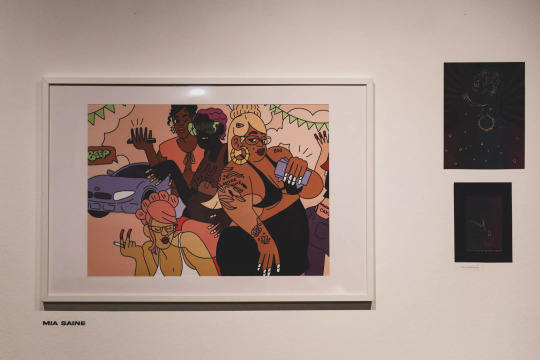
Graphic art on display Saturday at HoochieCon, a gathering celebrating Black style, culture, femme artistry and sexual freedom. (Jason Armond/Los Angeles Times)
The pull to honor this rich legacy in a major way compelled Truly to launch HoochieCon, a group exhibit featuring mixed-media art and music honoring Black women pioneers at the center of hoochie culture. The exhibit, which was co-organized and hosted by the popular queer community space Junior High last weekend, kicked off with three days of activations. The exhibit’s opening day featured the type of moody bisexual lighting that promises a good time. Attendees from near and far came decked with joyful energy and their interpretation of comfortable hoochie attire, and a stripper pole that was added to the gallery for the special day was put to good use thanks to the trio of dancers (Phoenix, Ziyah, Brooklyn) who blessed the space with their skills.
The intention at the heart of HoochieCon resonated with a range of Angelenos on their own journey of discovering and embracing their authentic self and sexual agency, including Earyn McGee, 28. “I am the oldest daughter in a Black family and definitely felt like I had to perform a certain way of being and show up physically a certain way,” she says, noting the baby steps she’s been taking toward less filtered self-expression now that she’s grown. “Even with my outfit for today, I was a little bit nervous but I was just like, ‘I’m trying to be in theme. This was an idea that I had and I’m just gonna go with it.’ I’m trying to do all the things that would’ve made kid-me happy.”
The next two days had a little something for everyone: a panel discussion moderated by Truly, a dance party (more on that shortly) and an outdoor market featuring Black vendors. Chef Rochelle Tyler of Selah Bakery served up vegan cookies with flavors like Hollaback Girl (banana pudding) and Babycakes (strawberry shortcake), while Cake Chemistry offered its boozy miniature red velvet cakes with Hennessy-infused caramel sauce and cream cheese buttercream. There were beanie purses and clothing designs by Beautiful Soul Childz for the avant-garde fashionista who’s gonna serve a look if nothing else, handcrafted jewelry by Skiin & Tones and Studio Ebunoluwa, Hooch Juice travel tumblers by High Standards Cosmetics to help the hoochies hydrate in style, and more.
With music being so deeply intertwined with hoochie culture, Truly knew she had to have space devoted to everybody coming together, dressing up and having fun on the dance floor. The experience of dancing and moving her body to good music in the company of new and old friends makes her feel tapped into a particular feeling of power. “There’s something powerful about dancing despite everything that’s going on outside and despite what’s in the news or maybe what’s happening when you go back to your house,” Truly says. “There’s freedom in getting together in community and seeing Black faces celebrate, regardless of what circumstance they face every day. There’s power, there’s freedom and there’s happiness in it for me.”
DJ Space Age was on music duty for HoochieCon’s dance-floor celebration and did not disappoint. Bangers from the ’90s and early 2000s that stand the test of time boomed through the speakers, eventually teasing out the most committed of wall huggers to let loose and shake a little something.

Dani Daniels poses for a portrait at Hoochie Con.(Jason Armond/Los Angeles Times)
For Danielle Daniels, 29, the visual nods to the ’90s throughout HoochieCon resonated instantly. “My style of dressing is ’90s style so I love the environment of HoochieCon. The bamboo earrings, the jackets, the clothes and the nails — it’s nice to come out and see a lot of girls with the same culture and idea of things and to be able to express ourselves together as Black women,” says Daniels, who considers Halle Berry and Natalie Desselle’s iconic BAPS characters major hoochie inspo for herself and her best friend. “I wanted to come and celebrate ourselves and the beauty that we bring to beauty culture and everything.”

Art on display at HoochieCon.(Jason Armond / Los Angeles Times)
As Truly takes in the fruits of her labor, and the community that has formed around her first HoochieCon, she’s mindful to acknowledge the importance of giving respect and reverence to women who have pioneered and “touched popular culture for so long” without reaping the benefits or even receiving credit. “Not only did they pioneer it, they also had to suffer for it,” Truly says. “They had to suffer to wear their hair the way they wanted to. They had to suffer to wear their nails the way they wanted to, and gold teeth, and to be sexually liberated. They had to suffer to shine.”
One day, years later, people will look at images of Truly’s HoochieCon celebration. “What do you hope they take away?” I ask the Hoochie Historian.
“I hope they take away from HoochieCon the importance of being yourself, no matter what people might judge you by,” says Truly, releasing a deep exhale, eyes watering as she processes the idea of HoochieCon reaching people generations into the future. “It’s important to be happy with how you look, how you feel, how you dress, and the choices that you make, and that is the most important thing. I want people, especially Black women, to take away that they can be fully themselves no matter what that looks like and still be worthy of all the good things.”
#Racial Stereotypes#Self-Sexual Exploitation#Negative Imagery#Self-Degradation#Feminist Lies#Women Objectifying Themselves#Women As Sex Objects#Double-Standards#Gender Double-Standards#Dumb Bitch Logic
3 notes
·
View notes
Text
The meaning of life
“If you don’t know how to live anymore, then live for me. I have no answer to the question you asked. However, if you don’t know the meaning to your life, then make me that meaning, and use me as the reason to live.”
Reading the quote above - it's from Heaven Official's Blessing btw - resonated deeply with my psyché, because it tackles my most prominent issue in life. This text might seem to be out of blue on blog like this, where all of the content is about love stories, but I promise, it perfectly fits. Why?
This blog was created when I was around 17 years or so. I intended to have it as a gallery display of my favorite content. Back then, I did not really know why I loved doing so.
It has been almost 10 years since and I discovered the reason.
When I was child, my parents made many, many promises to me. They were simple like "we will go to park, we will eat this, we will buy you this" and gradually they progressed into more important stuff. The promises however, were always broken. The promised things never came to life, leaving my young heart shattered. I put on a mask, hid my emotions, pushed back my tears, all in attempt to not feel the pain anymore.
My both parents eventually abandoned me for their new respective families.
I should mention that I live with a progressive disability - around the age of 15, I started losing my hearing. The world, so lively gradually became silent. I was also exiled as 11 years old child to boarding school because my parents were immersed in their new families and I became a nuissance. I never caused trouble. My grades were flawless, I was naturally gifted child and represented my school in various knowledge contests, which I always won. Whenever I brought home new first place diploma or medal, there was no reaction.
And I learned another defining thing of my life - to push back the joy, the happiness. I don't feel it anymore because it had no worth.
Craving for love that I never experienced, I consumed romantic media and made it my reason for living. I wanted to experience the feelings of being in love very much. In the span of 10 years, I had 3 serious relationships, two of them were longer than 4 years. I was practically never single, always chasing the dream.
But I never felt love. I never loved my partners in romantic sense. I cared for them, that was clear, but I could as easily imagine myself living without them. I never felt attracted to anyone - both sexually and romantically.
This made me question - why I can feel romantic attachement to fictional characters but not to a living person? Why I can experience those sweet butterflies when thinking about someone who does not exist?
Then it dawned on me - I'm aromantic asexual.
The realization broke me. Why? Why I have to suffer so much? Why I'm deprived of basic bodily and emotional function like hearing and the ability to feel romantic love? What did I do to deserve this, to have my life crippled to such extent?
What is the meaning of my life? Why do I even keep living?
Frankly, I have no answer to this. And I never will, because there is no way that someone will come, hug me and make himself the meaning of my life. Because I'm literally deprived by default of the chance to love and exist like a normal human should.
Therefore, this blog, this collection of pretty images and stories is my tombstone. Something, that will never happen to me.
#asexual#aromantic#aroace#sob story#why im like this#void#i feel empty#tian guan ci fu#heaven official's blessing#thank you
1 note
·
View note
Text
Celebrate Krishna Janmashtami with AdBanao App.

Krishna Janmashtami is the festival that marks the birth of Lord Krishna, the eighth incarnation of Lord Vishnu. He was born in Mathura and grew up in Gokul (Braj). Krishna Janmashtami is celebrated with great devotion and enthusiasm by Hindus all over the world. It falls on the eighth day of the dark fortnight in the month of Bhadrapada (August–September).
On this auspicious day, devotees observe fasts, chant prayers, sing bhajans (devotional songs), and perform puja (worship) to Krishna at midnight, the time of his birth. They also decorate their homes and temples with flowers, lights, and rangoli (colorful patterns). They offer sweets and fruits to the god and distribute them as prasad (blessed food) to their family and friends. They also enact scenes from Krishna’s life with idols and models. One of the most popular events is Dahi Handi, where young men form human pyramids to break a pot of yogurt hung high in the air. This is inspired by Krishna’s childhood prank of stealing butter from his foster mother Yashoda’s pots.
Do you want to make this Krishna Janmashtami more special and memorable? Do you want to create and share amazing content for this festival? If yes, then you should try AdBanao app, the ultimate app for creating and sharing festive content. AdBanao app lets you create stunning posters, videos, stickers, and more for any occasion with just a few clicks. You can customize and personalize your content with your own photos, text, music, and effects. You can also choose from a variety of templates and themes that suit your style and mood. AdBanao app is easy to use, fast, and free.
AdBanao app has the best posters, videos, WhatsApp stickers, GIF stickers, audio jingles for this Janmashtami. You can use them to decorate your home and temple, wish your loved ones a happy Janmashtami, invite them to join your celebrations, or promote your business or brand. You can also use them to express your love and devotion to Krishna and spread his message of peace and joy.
How to use AdBanao app for this Janmashtami? It’s very simple. Just follow these steps:
Step 1: Download AdBanao app from the Google Play Store or the Apple App Store and install it on your smartphone or tablet.
Step 2: Open AdBanao app and sign up with your email or phone number. You can also log in with your Facebook or Google account.
Step 3: On the home screen, you will see a list of categories such as Festival Posts, Festival Videos, Festival Stickers, etc. Tap on the category that you want to create content for.
Step 4: You will see a list of subcategories such as Krishna Janmashtami Posters, Krishna Janmashtami Videos, Dahi Handi Posters, Dahi Handi Videos, etc. Tap on the subcategory that you want to create content for.
Step 5: You will see a list of templates and themes that you can use for your content. Tap on the template or theme that you like and preview it.
Step 6: You can edit and customize your content by adding your own photos, text, music, and effects. You can also change the background, color, font, size, and position of the elements. To add photos, tap on the photo icon and select photos from your gallery or camera. To add text, tap on the text icon and type your message. To add music, tap on the music icon and select music from your device or from the app’s library. To add effects, tap on the effect icon and choose from various filters, stickers, emojis, etc.
Step 7: Once you are happy with your content, tap on the save icon to save it on your device. You can also tap on the share icon to share it with your friends, family, and customers via WhatsApp, Facebook, Instagram, Twitter, or any other social media platform.
That’s it! You have successfully created and shared your festive content using AdBanao app. You can also explore other categories and subcategories on AdBanao app and create more amazing content for any occasion.
AdBanao app is not just an app for creating festive content. It is also an app for creating business content. AdBanao app offers a range of options for businesses with over 150 categories and 700+ subcategories. It provides access to a library of 1.5 million posters and 500,000 videos that can give your business a branding advantage. You have the flexibility to select templates that align with your business niche and target audience. Additionally, you can easily customize details such as the business name, address, website, contact number, and logo in just a few simple steps.
AdBanao app supports 11 languages and has a special festival and events calendar for 365 days that will help you plan your campaigns ahead of time. You can also access additional features like remove background, digital business cards, captions template, collage creation, trending videos, logo maker, and more. With AdBanao app, you can make your business stand out from the crowd and attract more customers this Janmashtami. You can also use it for other upcoming festivals like Ganesh Utsav, Diwali, Christmas, New Year, and more.
Download AdBanao app today for free https://adbanao.page.link/sm
Hare Krishna Hare Krishna Krishna Krishna Hare Hare.
#krishna#janmasthami#shri krishna#vrindavan#mathura#bhagavad gita#adbanaoapp#adbanao#spirituality#followme#hare krishna#iskcon#iskontemple
0 notes
Text
AHEPA Senior Living Breaks Ground on Fifth Des Moines Area Community

DES MOINES, IOWA— AHEPA Senior Living (ASL), a nationwide nonprofit provider of affordable multifamily housing for older adults, held a groundbreaking ceremony for AHEPA 192 IV Apartments in Des Moines, Iowa, Aug. 18, 2023, announced ASL President and CEO Steve Beck.
The speaking program featured City Councilman Joe Gatto, Steve Eggleston, HUD Des Moines Field Office director; ASL Chairman of the Board Ike Gulas, and AHEPA 192 IV, Inc., Board President James L. Karthan, and AHEPA and Daughters of Penelope local chapter officers. Beck moderated the program, which also featured a ceremonial first shovel dig. Father Basil Hickman of Saint George Greek Orthodox Church performed the ground blessing. Attendees included representatives from the offices of U.S. Senators Charles Grassley (R-IA) and Joni Ernst (R-IA), and U.S. Rep. Zach Nunn (R-IA). Several ASL Executive Board officers and members also attended. The event earned coverage from the Des Moines Register, McKnights Senior Living, The Business Record, and The National Herald.
Photo Gallery (Credit to Joe Crimmings Creative Media)
AHEPA 192 IV will be a three-story, 90-unit affordable senior housing community located on 4.4 acres of the old Southridge Mall site. It will be the fifth Des Moines-area affordable senior housing community managed by ASL and administered by the U.S. Department of Housing and Urban Development Section 202 program.
According to Beck, AHEPA 192 Phase IV is the first HUD 202 community ASL is constructing since HUD began funding capital advances for new 202s in earnest a few years ago.
AHEPA 192 IV is a $22 million project. Its financing is comprised of a $8.9 million HUD Section 202 capital advance, a $6 million low-income housing tax credit allocation, a $1.25 million Polk County Housing Trust Fund award, and a HUD 223(f) mortgage loan.
“The need for affordable housing, especially for very low-income seniors, is great, and in the Des Moines area, each of our four existing communities has a waitlist,” Beck said. “We are excited and proud to be able to help seniors in need of safe and dignified housing with 90 new units thanks to our financing partners and the support we have received from the City of Des Moines, Polk County Housing Trust Fund, and HUD, and special thanks to our development team.”
ASL also manages AHEPA 192 Phase I Apartments in Johnston; AHEPA 192 Phases II and III Apartments, and Penelope 38 Apartments, in Ankeny. These four communities total 196 units.
AHEPA Senior Living affordable independent living communities offer very low-income older adults, 62 and over, residential apartment-home living with the voluntary supportive services they may need to continue to live independently as they age. Through service coordination, the services may include meal services, case management, transportation assistance, public benefits programs enrollment assistance, fitness and wellness programs, housekeeping assistance, and health services. As HUD Section 202 developments, they are subsidized and provide rental assistance for very low-income seniors.
About ASL
Serving more than 5,000 older adults across the United States, AHEPA Senior Living (ASL) is a mission-driven, nationwide provider of affordable independent and assisted senior living communities. Since 1980, it has developed and managed more than 90 affordable senior housing communities in 21 states administered by the U.S. Department of Housing and Urban Development Section 202 Supportive Housing for the Elderly program.
Through its subsidiaries, ASL owns and manages four affordable assisted living communities with 532 units in Indiana.
The mission of ASL is to provide older adults with safe, healthy, and enriching affordable residential communities and quality services that allow them to thrive and enjoy peace of mind.
To support our mission, please visit https://ahepaseniorliving.org/donate/
ASL is based in Fishers, Ind.
#assisted living in indiana#hellenic senior living of mishawaka#hellenic senior living#best senior living communities texas#indiana assisted living
0 notes
Text
Richardson, TX, is a University Town
The university is situated in Richardson, Texas. Some individuals enjoy the location, while others do not. Richardson is a college town, which contributes to some traffic. However, this may be a minor concern if you appreciate the college atmosphere. Overall, the advantages of residing here outweigh the disadvantages. This can be a great town if you are considering relocating to Richardson, Texas. I'm sure you'll find a perfect home that matches your requirements. If you have house blessings, it will help you prepare for your event if you get a caterer in Richardson, TX, that will prepare the food for you, your family, and your guests. Or if you have an upcoming party or celebration, this caterer can help you.
Caterer in Richardson, TX
Hiring a catering service provide access to high-quality ingredients and wider menu options. The best caterer in Richardson, TX, is Naborly Provisions Catering. It stands out from the competition with its focus on hospitality in a Naborly way. Founder Krista Nabors Dick has over ten years of experience in the industry and has created a catering company that provides delectable food, impeccable service, and a boutique-style menu. Naborly Provisions Catering offers transparent pricing and flexibility to accommodate dietary restrictions or specific menu requests, and its friendly and professional staff is dedicated to ensuring your event is a success. Contact them now to plan your successful event at 469-677-7004 EXT 1.

Catering Food and Drink Supplier
You can trust Naborly Provisions Catering, the well-known catering food and drink supplier, to make your event a success and give your guests a memorable experience. The professional staff takes care of everything for you, so you can sit back and relax. This seasoned caterer delivers impeccable service and makes your event a success. So, if you are looking for a caterer that provides exceptional service, Naborly Provisions Catering has you covered. Their friendly and professional staff work hard to ensure your guests have an unforgettable experience. With its expertise in various cuisines and unique Texas hospitality, Naborly Provisions Catering is the ideal choice for any event. It's the go-to caterer for delivering delectable food, impeccable service, and a simplistic approach that will impress your clients, industry partners, and community. For inquiries, call 469-677-7004 EXT 1.
Charles W. Eisemann Center for Performing Arts
The Charles W. Eisemann Center for Performing Arts and Corporate Presentations is located in the Galatyn Park Urban Center in Richardson's business and technology area. Its main lobby, Ticket Office, Forrest & Virginia Green Mezzanine Gallery, and administrative office are open to the public from 10 am to 6 pm, Monday to Saturday. This center aims to promote cultural diversity, educational enrichment, and fulfilling experiences for everyone in the community. Since its opening in September 2002, they have become a top-performing arts facility in the Dallas/Fort Worth area, recognized by clients, patrons, and the media for its events and architectural design.
Richardson Man Enters a Guilty plea for Multiple Charges
A man from Richardson has pled guilty to nine of the 13 charges he faced concerning the Capitol insurrection that occurred on January 6, 2021. Garret Miller, aged 36, was accused of storming the U.S. Capitol building and threatening Democratic lawmaker Alexandria Ocasio-Cortez on social media. He was arrested in the weeks following the incident and charged with multiple felony and misdemeanor charges. According to a federal complaint, Miller shared videos on social media showing himself inside the Capitol building during the riots. Before the event, Miller created Facebook posts indicating he would attend a pro-Donald Trump rally in Washington, D.C., and bring weapons. Read more.
Link to maps
Charles W. Eisemann Center for Performing Arts and Corporate Presentations
2351 Performance Dr, Richardson, TX 75082, United States
Get on N Central Expy in Dallas County from Galatyn Pkwy
2 min (0.6 mi)
Take US-75 S to W Tyler St
3 min (2.4 mi)
Continue on W Tyler St to your destination
52 sec (0.1 mi)
Naborly Provisions Catering
514 Lockwood Dr, Richardson, TX 75080, USA
1 note
·
View note
Text
By Dwight Garner
Martin Amis, whose caustic, erudite and bleakly comic novels redefined British fiction in the 1980s and ’90s with their sharp appraisal of tabloid culture and consumer excess, and whose private life made him tabloid fodder himself, died on Friday at his home in Lake Worth, Fla. He was 73.
His wife, the writer Isabel Fonseca, said the cause was esophageal cancer — the same disease that killed his close friend and fellow writer Christopher Hitchens in 2011.
Mr. Amis published 15 novels, a well-regarded memoir (“Experience,” in 2000), works of nonfiction, and collections of essays and short stories. In his later work he investigated Stalin’s atrocities, the war on terror and the legacy of the Holocaust.
He is best known for his so-called London trilogy of novels — “Money: A Suicide Note” (1985), “London Fields” (1990) and “The Information” (1995) — which remain, along with his memoir, his most representative and admired work.
The tone of these novels was bright, bristling and profane. “What I’ve tried to do is to create a high style to describe low things: the whole world of fast food, sex shows, nude mags,” Mr. Amis told The New York Times Book Review in a 1985 interview. “I’m often accused of concentrating on the pungent, rebarbative side of life in my books, but I feel I’m rather sentimental about it. Anyone who reads the tabloid papers will rub up against much greater horrors than I describe.”
Mr. Amis’s literary heroes — he called them his “Twin Peaks” — were Vladimir Nabokov and Saul Bellow, and critics located in his work both Nabokov’s gift for wordplay and gamesmanship and Bellow’s exuberance and brio.
Like the narrator of Mr. Bellow’s novel “The Actual,” Mr. Amis was “a first-class noticer.”
“I think all writers are Martians,” he said in a Paris Review interview. “They come and say, ‘You haven’t been seeing this place right.’”
Father and Son
Mr. Amis’s misanthropic wit made his voice at times reminiscent of that of his father, Kingsley Amis. Kingsley, who died in 1995, was one of the British working- and middle-class novelists of the 1950s known as the Angry Young Men and became famous with the success of his comic masterpiece “Lucky Jim” (1954).
Father and son were close, but they disagreed about much. Kingsley Amis drifted to the right with the rise of Margaret Thatcher; he once publicly referred to his son’s left-leaning political opinions as “howling nonsense.”
Their supposed rivalry was of great interest in Britain. When the National Portrait Gallery invited father and son to pose together, Kingsley’s thin-skinned refusal made the front page of The Sunday Telegraph. He later regretted the fuss, the younger Mr. Amis said.
Being the child of a well-known writer was, for Mr. Amis, both blessing and curse. It helped put him on the map earlier than he might otherwise have gotten there. It made him familiar at an early age with London’s hothouse publishing world. It also helped make him a figure of fascination, resentment and envy.
“I’d be in a very different position now if my father had been a schoolteacher,” Mr. Amis told The Sunday Times of London in 2014. He added: “I’ve been delegitimized by heredity. In the 1970s, people were sympathetic to me being the son of a novelist. They’re not at all sympathetic now, because it looks like cronyism.”
Mr. Amis’s talent was undeniable: He was the most dazzling stylist in postwar British fiction. So were his swagger and Byronic good looks. He had well-chronicled involvements with some of the most watched young women of his era. He wore, according to media reports, velvet jackets, Cuban-heel boots, bespoke shirts. He stared balefully into paparazzi lenses.
His raucous lunches with friends and fellow writers like Ian McEwan, Julian Barnes, Salman Rushdie, Clive James, James Fenton and Mr. Hitchens were written up in the press and made other writers feel that they were on the outside looking in. He seemed to be having more fun than other people. His detractors considered him less a bad boy than a spoiled brat.
Mr. Amis’s fame built to a crescendo in the mid-1990s. One “scandal,” as chronicled in English tabloids like The Daily Mail, followed the next.
In 1994, he dropped his longtime agent, Pat Kavanagh, the wife of his friend Mr. Barnes, for the rival agent Andrew Wylie, whom the British press nicknamed “the Jackal,” and a larger advance on a novel. The amount Mr. Amis wanted, a reported $794,500 (about $1.6 million today), was deemed unseemly. The episode ended his friendship with Mr. Barnes, although a decade later Mr. Amis said they had reconciled.
Also in 1994 Mr. Amis left his first wife, Antonia Phillips, for Ms. Fonseca, a younger woman who Mr. Hitchens said in one interview was being pursued by Mr. Rushdie, among others. The press ate up the details, especially those about expensive dental work that Mr. Amis had, although he saw it as an acute medical necessity.
Mr. Amis drew attention in later decades for the interviews he gave around the publication of his novels. These tended to be wide-ranging and opinionated; he shot from the hip. Often enough they got him into trouble.
In a 2006 interview, after the thwarting of an attempt to bomb trans-Atlantic flights from Heathrow Airport by British-born Muslims, Mr. Amis suggested that the Muslim community in England might “have to suffer until it gets its house in order.” He proposed that this might involve the curtailing of freedoms.
The comments drew condemnation from many, including the English literary critic Terry Eagleton, who called them “stomach-churning” and said they resembled those of “a British National Party thug.” Mr. Amis apologized, calling the remarks “categorically wrong” and “stupid.”
Mr. Amis’s work grew more political and historical, and more serious in tone, in the 2000s and 2010s. Critics often found his later books wanting, and reviews could be scathing.
He was sanguine about these attacks. He told one interviewer: “There’s a one-word narrative for every writer. For Hitchens, it was ‘contrarian.’ For me, it’s ‘decline.’”
A Well-Traveled Youth
Martin Louis Amis was born on Aug. 25, 1949, in Oxford, England. He had an older brother, Philip, and a younger sister, Sally, who died in 2000. His mother was Hilary A. Bardwell, the daughter of a civil servant in the agriculture ministry.
Martin attended more than a dozen schools in the 1950s and ’60s as a result of his father’s travels on the academic circuit after the success of “Lucky Jim.” The constant need to make new friends, he said, helped make him funny. The Amis family spent a year in Princeton, N.J., a sojourn that introduced Martin to America, with which he maintained a lifelong fascination.
The Amis household was permissive. Mr. Amis compared it, in a 1990 interview with The New York Times Magazine, to “something out of early Updike, ‘Couples’ flirtations and a fair amount of drinking.” It would have gone unremarked, he wrote in his memoir, if he had lit a cigarette under the Christmas tree at 5.
He was devastated, at 12, by his parents’ divorce. He read mostly comic books and was “pretty illiterate,” he said, until he was 17. That’s when his stepmother, the novelist Elizabeth Jane Howard, urged him to read Jane Austen. He crammed to get into Exeter College at Oxford, where in 1971 he graduated with honors in English.
After leaving Oxford, Mr. Amis held a string of journalistic and literary jobs in London. He became an editorial assistant at The Times Literary Supplement in 1972, and two years later became its fiction and poetry editor. In 1975, he joined the editorial staff of The New Statesman magazine and within about a year he was its literary editor, at 27. It was there that he began his long friendship with Mr. Hitchens.
In his 2010 memoir, “Hitch-22,” Mr. Hitchens recalled Mr. Amis in the early years of their acquaintance, noting how the Rolling Stones had come to mind when Clive James referred to Mr. Amis as resembling “a stubby Jagger.”
“He was more blond than Jagger and indeed rather shorter,” Mr. Hitchens wrote, “but his sensuous lower lip was a crucial feature,” and “you would always know when he had come into the room.”
Mr. Amis wrote his first novel, “The Rachel Papers,” published in England in 1973, on nights and weekends. He gave himself a year to complete it. If it hadn’t panned out, he said, he might have considered academia.
“The Rachel Papers” is autobiographical and among his most traditional in terms of its form. It is about a bright, sardonic, sexually obsessed young man (“Erections, as we all know, come to the teenager on a plate”) and his girlfriend, Rachel, while he studies for his college exams.
The novel’s electric prose established Mr. Amis as an important young English writer and won the Somerset Maugham Award for writers under 30. It did less well in America. “The Rachel Papers” was panned in The New York Times Book Review by Grace Glueck, who called it “a crotch-and-armpit saga of late adolescence,” and in the daily Times by Anatole Broyard, who wrote, “Considering the advantages he has had, Martin has not covered himself in glory.”
Mr. Amis followed “The Rachel Papers” with “Dead Babies” (1976), a blackly humorous novel about drug-taking and sex among a group of young people in a rural house over a single weekend, and “Success,” published in England in 1978, a Swiftian satire about sibling rivalry and foster brothers of different social backgrounds.
Mr. Amis’s novels found an immediate readership in Britain. In the United States, he was slower to catch on. “Success” did not find an American publisher until 1987.
Many Americans first heard the name Martin Amis because of a plagiarism scandal. In 1980 Mr. Amis accused Jacob Epstein — the son of Barbara Epstein, a founder of The New York Review of Books — of lifting multiple passages from “The Rachel Papers” and placing them in his own first novel, “Wild Oats.” Mr. Amis wrote that “Epstein wasn’t influenced by ‘The Rachel Papers,’ he had it flattened out beside his typewriter.” Mr. Epstein later admitted copying passages, and apologized.
For nearly three decades after, Mr. Amis’s books were not reviewed in the NYRB, one of the chief intellectual organs in the English language.
‘Money’ and More Success
Mr. Amis married Ms. Phillips, a widowed Boston philosophy teacher, in 1984. They had two sons, Louis and Jacob. That year, Mr. Amis published “Money,” a novel that Time magazine would include on a list of the “100 best English-language novels from 1923 to the present.”
“Money” is narrated by John Self, a director of commercials who becomes tangled in a film project. Self is a drunk and a hedonist, and an acid observer of life. In a metafictional twist, Mr. Amis wrote himself into “Money” as one of Self’s confidants. Moments like these in his novels, he said, made the more traditionally minded Kingsley Amis want to fling his son’s books across the room.
More than a decade of successful and critically admired novels followed. “London Fields” is set amid fears of approaching climate-related apocalypse. The events in “Time’s Arrow” (1991) occur in reverse: An American doctor grows younger and finds himself working in the medical section of Auschwitz. “The Information” (1995) is about two friends, both writers, who become antagonists after one becomes famous and wealthy.
Reviewing “The Information” in The Times, Michiko Kakutani wrote that “all the themes and stylistic experiments in Mr. Amis’s earlier fiction come together in a symphonic whole.” In The Washington Post, Jonathan Yardley called Mr. Amis “a force unto himself among those of his generation now writing fiction in English,” adding, “there is, quite simply, no one else like him.”
After he and Ms. Phillips divorced, Mr. Amis married Ms. Fonseca in 1998. A Uruguayan American writer, Ms. Fonseca is the author of “Bury Me Standing: The Gypsies and Their Journey” (1995). The couple had two daughters, Fernanda and Clio.
What one might call the back half of Mr. Amis’s career began roughly in 2000. He still published the occasional slashing novel about loutish men and declining standards; these included “Yellow Dog” (2003), his most poorly reviewed book, and “Lionel Asbo: State of England” (2012).
He also demonstrated, in the reviews and essays collected in “The War Against Cliché” (2001), that he was among the fiercest and most intelligent literary critics of his time. His reviews were an important part of his reputation.
But on the whole, he turned to larger and deeper historical subjects and themes — to mixed reviews.
In 2002, Mr. Amis published “Koba the Dread: Laughter and the Twenty Million,” a study of the Stalin regime’s atrocities in the Soviet Union. The title alludes to Stalin’s nickname, Koba. The word “laughter” in the subtitle refers to Mr. Amis’s morally perplexed realization that, while Hitler and the Holocaust are off limits, many consider it appropriate to joke about Stalin and the Soviet Union.
He revisited some of that book’s themes and research in “House of Meetings” (2006), a novel about two brothers who live in a Soviet gulag during the last decade of Stalin’s rule and love the same woman.
In 2008, Mr. Amis published “The Second Plane,” a collection of 12 pieces of nonfiction and two short stories about the Western world and terror. “Are you an Islamophobe?” he was asked by the British newspaper The Independent while he was writing the book.
“Of course not,” he replied. “What I am is an Islamismophobe. Or better say an anti-Islamist, because a ‘phobia’ is an irrational fear, and there is nothing irrational about fearing people who say they want to kill you.” He added: “Anti-Islamism is not like antisemitism. There is a reason for it.”
Brooklynite
Mr. Amis and Ms. Fonseca moved with their daughters to Brooklyn in 2011, purchasing a five-story brownstone in the fashionable Cobble Hill neighborhood. They moved to be closer to Ms. Fonseca’s parents, he said, and also to Mr. Hitchens, who died in December that year. Mr. Amis gave a moving oration at Mr. Hitchens’s memorial. They also had a home in Lake Worth, Fla., where Mr. Amis died.
In addition to Ms. Fonseca, Mr. Amis is survived by three daughters, Delilah Jeary, Fernanda Amis and Clio Amis; two sons, Louis and Jacob Amis; four grandchildren; and a brother, James Boyd.
Ms. Jeary was his daughter from a brief affair Mr. Amis had with the artist Lamorna Seale in the 1970s. She did not discover that he was her father until she was 19.
In 2008, Delilah Seale had a son, making Mr. Amis a grandfather. At the Hay Festival of Literature & Arts in Wales in the summer of 2010, Mr. Amis dryly commented that “being a grandfather is like getting a telegram from the mortuary.”
In America, he was happy to escape what he called “the cruising hostility” of the English press. He became an almost avuncular figure in Brooklyn, regularly seen walking his daughters to school. No longer the upstart, Mr. Amis himself inspired a younger generation of writers, including Zadie Smith and Will Self.
As he aged, he stopped playing tennis, a sport he once played daily and wrote about often. He mostly stopped writing criticism, too. “Insulting people in print is a vice of youth,” he said in an interview with The Independent. “Insulting people in your middle age is undignified, and looks more and more demented as you head toward the twilight.”
He never won England’s best-known literary award, the Booker Prize, although many of the novelists he was associated with — including Mr. McEwan, Mr. Rushdie and Mr. Barnes — did. Mr. Amis was shortlisted for the award in 1991 for “Time’s Arrow,” and longlisted in 2003 for “Yellow Dog.”
His final novel, “Inside Story,” published in 2020, was a “novelized autobiography” that considered his friendship with Mr. Hitchens and his relationship with his father.
In his writing about Mr. Hitchens, Mr. Amis “accesses a depth of feeling and plainness of language entirely new to his work,” the Times critic Parul Sehgal wrote in praising “Inside Story.” She added, “I write under the sign of Amis.”
On the day he died, a film of Mr. Amis’s 2014 Holocaust novel, “Zone of Interest” — the title refers to Germany’s term for the 40-square-kilometer area that surrounded Auschwitz — debuted to strong reviews at the Cannes Film Festival. Directed by Jonathan Glazer, the film (like the novel) is partly about the idyllic life of a camp commander and his wife, who live just outside the barb-wired compound.
Mortality was long a theme in Mr. Amis’s work. In “The Information,” he wrote: “Every morning we leave more in the bed: certainty, vigor, past loves. And hair, and skin: dead cells. This ancient detritus was nonetheless one move ahead of you, making its humorless own arrangements to rejoin the cosmos.”
He might have been speaking of himself in that novel when he wrote of one of its dueling writers: “He didn’t want to please his readers. He wanted to stretch them until they twanged.”
0 notes
Text
By Dwight Garner
Martin Amis, whose caustic, erudite and bleakly comic novels redefined British fiction in the 1980s and ’90s with their sharp appraisal of tabloid culture and consumer excess, and whose private life made him tabloid fodder himself, died on Friday at his home in Lake Worth, Fla. He was 73.
His wife, the writer Isabel Fonseca, said the cause was esophageal cancer — the same disease that killed his close friend and fellow writer Christopher Hitchens in 2011.
Mr. Amis published 15 novels, a well-regarded memoir (“Experience,” in 2000), works of nonfiction, and collections of essays and short stories. In his later work he investigated Stalin’s atrocities, the war on terror and the legacy of the Holocaust.
He is best known for his so-called London trilogy of novels — “Money: A Suicide Note” (1985), “London Fields” (1990) and “The Information” (1995) — which remain, along with his memoir, his most representative and admired work.
The tone of these novels was bright, bristling and profane. “What I’ve tried to do is to create a high style to describe low things: the whole world of fast food, sex shows, nude mags,” Mr. Amis told The New York Times Book Review in a 1985 interview. “I’m often accused of concentrating on the pungent, rebarbative side of life in my books, but I feel I’m rather sentimental about it. Anyone who reads the tabloid papers will rub up against much greater horrors than I describe.”
Mr. Amis’s literary heroes — he called them his “Twin Peaks” — were Vladimir Nabokov and Saul Bellow, and critics located in his work both Nabokov’s gift for wordplay and gamesmanship and Bellow’s exuberance and brio.
Like the narrator of Mr. Bellow’s novel “The Actual,” Mr. Amis was “a first-class noticer.”
“I think all writers are Martians,” he said in a Paris Review interview. “They come and say, ‘You haven’t been seeing this place right.’”
Father and Son
Mr. Amis’s misanthropic wit made his voice at times reminiscent of that of his father, Kingsley Amis. Kingsley, who died in 1995, was one of the British working- and middle-class novelists of the 1950s known as the Angry Young Men and became famous with the success of his comic masterpiece “Lucky Jim” (1954).
Father and son were close, but they disagreed about much. Kingsley Amis drifted to the right with the rise of Margaret Thatcher; he once publicly referred to his son’s left-leaning political opinions as “howling nonsense.”
Their supposed rivalry was of great interest in Britain. When the National Portrait Gallery invited father and son to pose together, Kingsley’s thin-skinned refusal made the front page of The Sunday Telegraph. He later regretted the fuss, the younger Mr. Amis said.
Being the child of a well-known writer was, for Mr. Amis, both blessing and curse. It helped put him on the map earlier than he might otherwise have gotten there. It made him familiar at an early age with London’s hothouse publishing world. It also helped make him a figure of fascination, resentment and envy.
“I’d be in a very different position now if my father had been a schoolteacher,” Mr. Amis told The Sunday Times of London in 2014. He added: “I’ve been delegitimized by heredity. In the 1970s, people were sympathetic to me being the son of a novelist. They’re not at all sympathetic now, because it looks like cronyism.”
Mr. Amis’s talent was undeniable: He was the most dazzling stylist in postwar British fiction. So were his swagger and Byronic good looks. He had well-chronicled involvements with some of the most watched young women of his era. He wore, according to media reports, velvet jackets, Cuban-heel boots, bespoke shirts. He stared balefully into paparazzi lenses.
His raucous lunches with friends and fellow writers like Ian McEwan, Julian Barnes, Salman Rushdie, Clive James, James Fenton and Mr. Hitchens were written up in the press and made other writers feel that they were on the outside looking in. He seemed to be having more fun than other people. His detractors considered him less a bad boy than a spoiled brat.
Mr. Amis’s fame built to a crescendo in the mid-1990s. One “scandal,” as chronicled in English tabloids like The Daily Mail, followed the next.
In 1994, he dropped his longtime agent, Pat Kavanagh, the wife of his friend Mr. Barnes, for the rival agent Andrew Wylie, whom the British press nicknamed “the Jackal,” and a larger advance on a novel. The amount Mr. Amis wanted, a reported $794,500 (about $1.6 million today), was deemed unseemly. The episode ended his friendship with Mr. Barnes, although a decade later Mr. Amis said they had reconciled.
Also in 1994 Mr. Amis left his first wife, Antonia Phillips, for Ms. Fonseca, a younger woman who Mr. Hitchens said in one interview was being pursued by Mr. Rushdie, among others. The press ate up the details, especially those about expensive dental work that Mr. Amis had, although he saw it as an acute medical necessity.
Mr. Amis drew attention in later decades for the interviews he gave around the publication of his novels. These tended to be wide-ranging and opinionated; he shot from the hip. Often enough they got him into trouble.
In a 2006 interview, after the thwarting of an attempt to bomb trans-Atlantic flights from Heathrow Airport by British-born Muslims, Mr. Amis suggested that the Muslim community in England might “have to suffer until it gets its house in order.” He proposed that this might involve the curtailing of freedoms.
The comments drew condemnation from many, including the English literary critic Terry Eagleton, who called them “stomach-churning” and said they resembled those of “a British National Party thug.” Mr. Amis apologized, calling the remarks “categorically wrong” and “stupid.”
Mr. Amis’s work grew more political and historical, and more serious in tone, in the 2000s and 2010s. Critics often found his later books wanting, and reviews could be scathing.
He was sanguine about these attacks. He told one interviewer: “There’s a one-word narrative for every writer. For Hitchens, it was ‘contrarian.’ For me, it’s ‘decline.’”
A Well-Traveled Youth
Martin Louis Amis was born on Aug. 25, 1949, in Oxford, England. He had an older brother, Philip, and a younger sister, Sally, who died in 2000. His mother was Hilary A. Bardwell, the daughter of a civil servant in the agriculture ministry.
Martin attended more than a dozen schools in the 1950s and ’60s as a result of his father’s travels on the academic circuit after the success of “Lucky Jim.” The constant need to make new friends, he said, helped make him funny. The Amis family spent a year in Princeton, N.J., a sojourn that introduced Martin to America, with which he maintained a lifelong fascination.
The Amis household was permissive. Mr. Amis compared it, in a 1990 interview with The New York Times Magazine, to “something out of early Updike, ‘Couples’ flirtations and a fair amount of drinking.” It would have gone unremarked, he wrote in his memoir, if he had lit a cigarette under the Christmas tree at 5.
He was devastated, at 12, by his parents’ divorce. He read mostly comic books and was “pretty illiterate,” he said, until he was 17. That’s when his stepmother, the novelist Elizabeth Jane Howard, urged him to read Jane Austen. He crammed to get into Exeter College at Oxford, where in 1971 he graduated with honors in English.
After leaving Oxford, Mr. Amis held a string of journalistic and literary jobs in London. He became an editorial assistant at The Times Literary Supplement in 1972, and two years later became its fiction and poetry editor. In 1975, he joined the editorial staff of The New Statesman magazine and within about a year he was its literary editor, at 27. It was there that he began his long friendship with Mr. Hitchens.
In his 2010 memoir, “Hitch-22,” Mr. Hitchens recalled Mr. Amis in the early years of their acquaintance, noting how the Rolling Stones had come to mind when Clive James referred to Mr. Amis as resembling “a stubby Jagger.”
“He was more blond than Jagger and indeed rather shorter,” Mr. Hitchens wrote, “but his sensuous lower lip was a crucial feature,” and “you would always know when he had come into the room.”
Mr. Amis wrote his first novel, “The Rachel Papers,” published in England in 1973, on nights and weekends. He gave himself a year to complete it. If it hadn’t panned out, he said, he might have considered academia.
“The Rachel Papers” is autobiographical and among his most traditional in terms of its form. It is about a bright, sardonic, sexually obsessed young man (“Erections, as we all know, come to the teenager on a plate”) and his girlfriend, Rachel, while he studies for his college exams.
The novel’s electric prose established Mr. Amis as an important young English writer and won the Somerset Maugham Award for writers under 30. It did less well in America. “The Rachel Papers” was panned in The New York Times Book Review by Grace Glueck, who called it “a crotch-and-armpit saga of late adolescence,” and in the daily Times by Anatole Broyard, who wrote, “Considering the advantages he has had, Martin has not covered himself in glory.”
Mr. Amis followed “The Rachel Papers” with “Dead Babies” (1976), a blackly humorous novel about drug-taking and sex among a group of young people in a rural house over a single weekend, and “Success,” published in England in 1978, a Swiftian satire about sibling rivalry and foster brothers of different social backgrounds.
Mr. Amis’s novels found an immediate readership in Britain. In the United States, he was slower to catch on. “Success” did not find an American publisher until 1987.
Many Americans first heard the name Martin Amis because of a plagiarism scandal. In 1980 Mr. Amis accused Jacob Epstein — the son of Barbara Epstein, a founder of The New York Review of Books — of lifting multiple passages from “The Rachel Papers” and placing them in his own first novel, “Wild Oats.” Mr. Amis wrote that “Epstein wasn’t influenced by ‘The Rachel Papers,’ he had it flattened out beside his typewriter.” Mr. Epstein later admitted copying passages, and apologized.
For nearly three decades after, Mr. Amis’s books were not reviewed in the NYRB, one of the chief intellectual organs in the English language.
‘Money’ and More Success
Mr. Amis married Ms. Phillips, a widowed Boston philosophy teacher, in 1984. They had two sons, Louis and Jacob. That year, Mr. Amis published “Money,” a novel that Time magazine would include on a list of the “100 best English-language novels from 1923 to the present.”
“Money” is narrated by John Self, a director of commercials who becomes tangled in a film project. Self is a drunk and a hedonist, and an acid observer of life. In a metafictional twist, Mr. Amis wrote himself into “Money” as one of Self’s confidants. Moments like these in his novels, he said, made the more traditionally minded Kingsley Amis want to fling his son’s books across the room.
More than a decade of successful and critically admired novels followed. “London Fields” is set amid fears of approaching climate-related apocalypse. The events in “Time’s Arrow” (1991) occur in reverse: An American doctor grows younger and finds himself working in the medical section of Auschwitz. “The Information” (1995) is about two friends, both writers, who become antagonists after one becomes famous and wealthy.
Reviewing “The Information” in The Times, Michiko Kakutani wrote that “all the themes and stylistic experiments in Mr. Amis’s earlier fiction come together in a symphonic whole.” In The Washington Post, Jonathan Yardley called Mr. Amis “a force unto himself among those of his generation now writing fiction in English,” adding, “there is, quite simply, no one else like him.”
After he and Ms. Phillips divorced, Mr. Amis married Ms. Fonseca in 1998. A Uruguayan American writer, Ms. Fonseca is the author of “Bury Me Standing: The Gypsies and Their Journey” (1995). The couple had two daughters, Fernanda and Clio.
What one might call the back half of Mr. Amis’s career began roughly in 2000. He still published the occasional slashing novel about loutish men and declining standards; these included “Yellow Dog” (2003), his most poorly reviewed book, and “Lionel Asbo: State of England” (2012).
He also demonstrated, in the reviews and essays collected in “The War Against Cliché” (2001), that he was among the fiercest and most intelligent literary critics of his time. His reviews were an important part of his reputation.
But on the whole, he turned to larger and deeper historical subjects and themes — to mixed reviews.
In 2002, Mr. Amis published “Koba the Dread: Laughter and the Twenty Million,” a study of the Stalin regime’s atrocities in the Soviet Union. The title alludes to Stalin’s nickname, Koba. The word “laughter” in the subtitle refers to Mr. Amis’s morally perplexed realization that, while Hitler and the Holocaust are off limits, many consider it appropriate to joke about Stalin and the Soviet Union.
He revisited some of that book’s themes and research in “House of Meetings” (2006), a novel about two brothers who live in a Soviet gulag during the last decade of Stalin’s rule and love the same woman.
In 2008, Mr. Amis published “The Second Plane,” a collection of 12 pieces of nonfiction and two short stories about the Western world and terror. “Are you an Islamophobe?” he was asked by the British newspaper The Independent while he was writing the book.
“Of course not,” he replied. “What I am is an Islamismophobe. Or better say an anti-Islamist, because a ‘phobia’ is an irrational fear, and there is nothing irrational about fearing people who say they want to kill you.” He added: “Anti-Islamism is not like antisemitism. There is a reason for it.”
Brooklynite
Mr. Amis and Ms. Fonseca moved with their daughters to Brooklyn in 2011, purchasing a five-story brownstone in the fashionable Cobble Hill neighborhood. They moved to be closer to Ms. Fonseca’s parents, he said, and also to Mr. Hitchens, who died in December that year. Mr. Amis gave a moving oration at Mr. Hitchens’s memorial. They also had a home in Lake Worth, Fla., where Mr. Amis died.
In addition to Ms. Fonseca, Mr. Amis is survived by three daughters, Delilah Jeary, Fernanda Amis and Clio Amis; two sons, Louis and Jacob Amis; four grandchildren; and a brother, James Boyd.
Ms. Jeary was his daughter from a brief affair Mr. Amis had with the artist Lamorna Seale in the 1970s. She did not discover that he was her father until she was 19.
In 2008, Delilah Seale had a son, making Mr. Amis a grandfather. At the Hay Festival of Literature & Arts in Wales in the summer of 2010, Mr. Amis dryly commented that “being a grandfather is like getting a telegram from the mortuary.”
In America, he was happy to escape what he called “the cruising hostility” of the English press. He became an almost avuncular figure in Brooklyn, regularly seen walking his daughters to school. No longer the upstart, Mr. Amis himself inspired a younger generation of writers, including Zadie Smith and Will Self.
As he aged, he stopped playing tennis, a sport he once played daily and wrote about often. He mostly stopped writing criticism, too. “Insulting people in print is a vice of youth,” he said in an interview with The Independent. “Insulting people in your middle age is undignified, and looks more and more demented as you head toward the twilight.”
He never won England’s best-known literary award, the Booker Prize, although many of the novelists he was associated with — including Mr. McEwan, Mr. Rushdie and Mr. Barnes — did. Mr. Amis was shortlisted for the award in 1991 for “Time’s Arrow,” and longlisted in 2003 for “Yellow Dog.”
His final novel, “Inside Story,” published in 2020, was a “novelized autobiography” that considered his friendship with Mr. Hitchens and his relationship with his father.
In his writing about Mr. Hitchens, Mr. Amis “accesses a depth of feeling and plainness of language entirely new to his work,” the Times critic Parul Sehgal wrote in praising “Inside Story.” She added, “I write under the sign of Amis.”
On the day he died, a film of Mr. Amis’s 2014 Holocaust novel, “Zone of Interest” — the title refers to Germany’s term for the 40-square-kilometer area that surrounded Auschwitz — debuted to strong reviews at the Cannes Film Festival. Directed by Jonathan Glazer, the film (like the novel) is partly about the idyllic life of a camp commander and his wife, who live just outside the barb-wired compound.
Mortality was long a theme in Mr. Amis’s work. In “The Information,” he wrote: “Every morning we leave more in the bed: certainty, vigor, past loves. And hair, and skin: dead cells. This ancient detritus was nonetheless one move ahead of you, making its humorless own arrangements to rejoin the cosmos.”
He might have been speaking of himself in that novel when he wrote of one of its dueling writers: “He didn’t want to please his readers. He wanted to stretch them until they twanged.”
0 notes